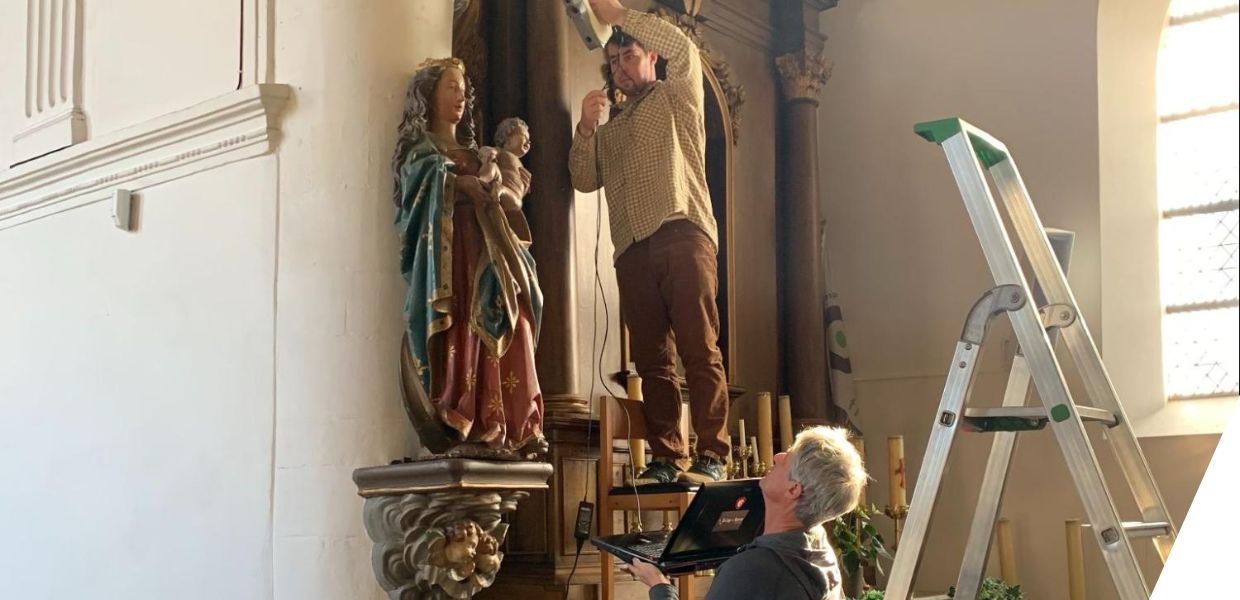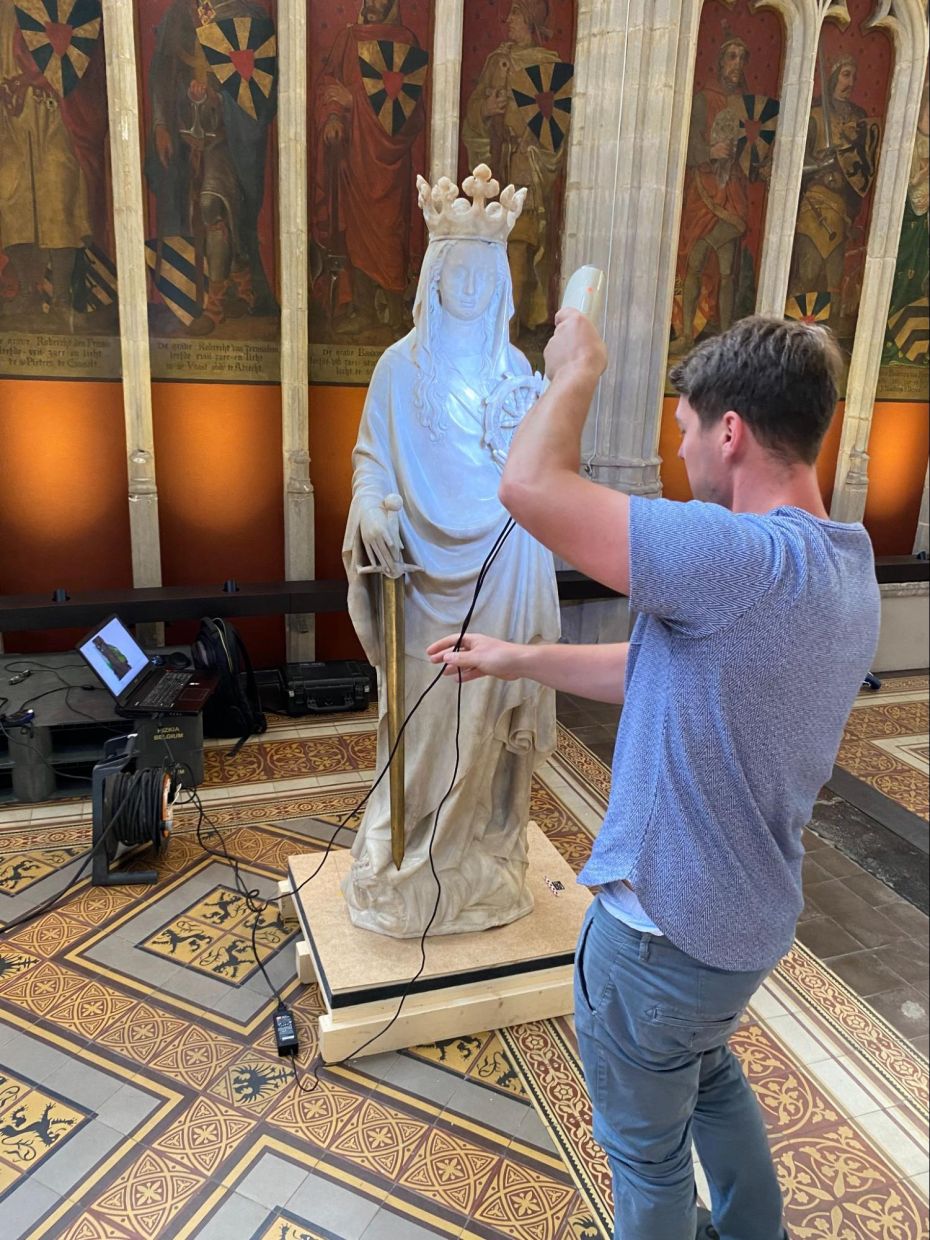Cultural heritage institutions face diverse challenges in the digital era. The potential of 3D technology for preserving and showcasing cultural artefacts has become an indispensable part of digital strategies. 3D technology allows for the creation of accurate and detailed digital replicas of artefacts, ensuring their preservation for future generations. This digital preservation mitigates the risk of physical deterioration and provides a robust backup in case of unforeseen events.
While large institutions may have the means to invest in cutting-edge technologies, smaller cultural heritage organisations often lack the resources or the knowledge to start exploring the power of 3D technology to enhance the digital potential of their collections. Meemoo works to support these collections and explore the development and implementation of initiatives to digitise and preserve 3D cultural heritage assets.
Within the GIVE project, a coordinated initiative for Flemish cultural heritage digitisation funded by European Regional Development Fund (ERDF) of the European Union, we launched a pilot project on 3D digitisation. This project aimed to examine the possibilities and practical challenges of 3D scanning of different sized objects, consisting of various materials, in different locations and situations. In total, meemoo scanned 134 objects at 10 different locations, ranging from museums to churches. The focus of this project was mainly gathering experience in the scanning process itself and the challenges faced with scanning on location.
Getting started by finding a partner
While Meemoo coordinates digitisation projects, we work with external partners and contractors to carry out the digitisation itself. For the GIVE project, we set up a public procurement procedure to find a suitable partner specialised in 3D structured light scanning.
Starting a 3D digitising project through a public procurement procedure involves a structured approach to ensure transparency, fair competition and compliance with legal and procedural requirements. To outline the specific technical requirements, including information on the scanning technology, resolution and file formats, we worked with an external advisor specialised in 3D modelling, and published the complete tender file on our website.
One of our main concerns was to ensure a sustainable approach with regard to the preservation of the 3D digital assets, and the focus on colour and texture. Since a lot of 3D scanning companies work mostly for industrial clients and have little or no experience with the delicacy of heritage objects, it was not easy to find a suitable partner for this project who was able to think along with the technical requirements, especially around colour and texture. However, we were eventually able to find a company suitable for the project who specialised in archaeology and had some experience scanning objects in museums.
The process: challenges and lessons learned
For this project we chose to work with structured light 3D scanning, a rapid 3D scanning technique by which a pattern of light is projected onto the surface of an object. By analysing the deformation of the projected pattern on the object's surface, precise 3D coordinates can be calculated, allowing for the rapid creation of a detailed digital model. This method is particularly efficient for scanning artefacts as it captures high-resolution surface information quickly, making it a fast and accurate technology for digitising objects with complex geometries.
As you can see from the images, we could use handheld scanners to work with the technology, which was very helpful for this project, as we had to work on 10 different - sometimes remote - locations, and had to make sure that everything could be captured on the spot. In the case of complex colour and texture for instance with wooden polychrome sculptures, additional photographs were used to add to the colour and texture of the 3D model.


